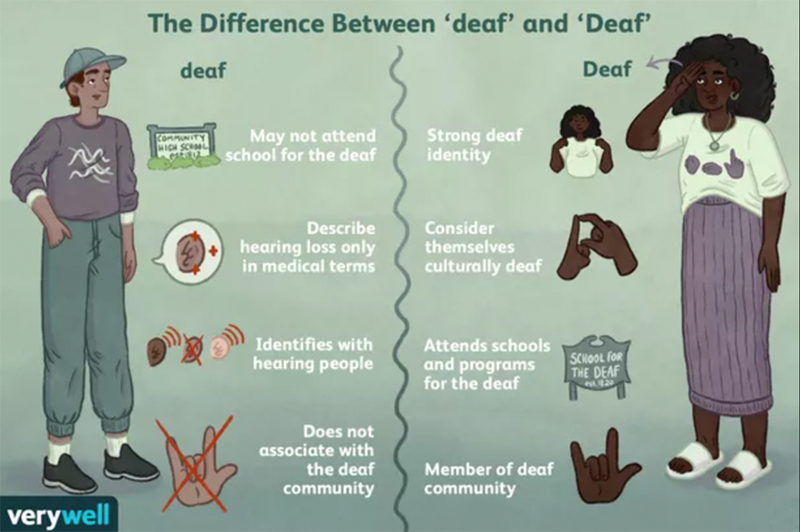Teach This Poem, though developed with a classroom in mind, can be easily adapted for remote-learning, hybrid-learning models, or in-person classes. Please see our suggestions for how to adapt this lesson for remote or blended learning. We have also noted suggestions when applicable and will continue to add to these suggestions online.
The following activities and questions are designed to help your students use their noticing skills to move through the poem and develop their thinking about its meaning with confidence, using what they’ve noticed as evidence for their interpretations. Read more about the framework upon which these activities are based.
- Warm-up: (draw) Finish this phrase by drawing what comes to mind for you, “I made / a photograph of my name.”
- Before Reading the Poem: Based on the drawing you just made, with a partner, discuss the significance of names. Look at the infographic about self-identification in the d/Deaf community. What do you notice?
- Reading the Poem: Read the poem “Portrait of My Gender as [Inaudible]” by Meg Day. What do you notice about the poem? Note any words or phrases that stand out to you or any questions you might have.
- Listening to the Poem: (enlist two volunteers to read the poem aloud) Listen as the poem is read aloud twice, and write down any additional words and phrases that stand out to you.
- Small-group Discussion: Share what you noticed in the poem with a small group of students. Based on the details you just shared with your small group and the resources you discussed at the beginning of class, how does this speaker of the poem feel about gender and/or naming? What does this poem say about creation? How do these things compare to the image that you drew at the beginning of class?
- Whole-class Discussion: What do you think of these lines “I was made in the image / of a thing without // an image & silence, too, / is your invention”? How is silence embodied in the poem?
- Extension for Grades 7-8: Read Meg Day’s piece “Sound Consequence.” Write a response to this essay and share with your classmates.
- Extension for Grades 9-12: (Teachers, you may want to pre-select poems appropriate for your classroom.) In honor of #DisabilityJustice, read a poem from this digital anthology of work curated by Leah Lakshmi Piepzna-Samarasinha, who said about the anthology, “The poems in this folio are but a small selection of the vast array of disabled, d/Deaf, neurodivergent, and/or chronically ill poets out there. Because disability justice is a framework created by and centering the lives and issues of Black, Indigenous and People of Color, Queer, Trans and Two-Spirit disabled people, I chose to select poems by poets from those very groups.” Learn more about your poet and share why their work is important.
“Poetry Coalition members aim to demonstrate how poetry can inspire questions in their communities about disability justice and spark increased engagement with this important theme. Member organizations are committed to offering programming that is accessible and that includes disabled, neurodivergent, and d/Deaf poets and those of diverse racial, ethnic, and gender identities, backgrounds, and communities.” Read more and find resources about poetry and disability justice.
This week’s poetic term is imagery, which refers to language in a poem representing a sensory experience, including visual, auditory, olfactory, tactile, and gustatory. Read more.

